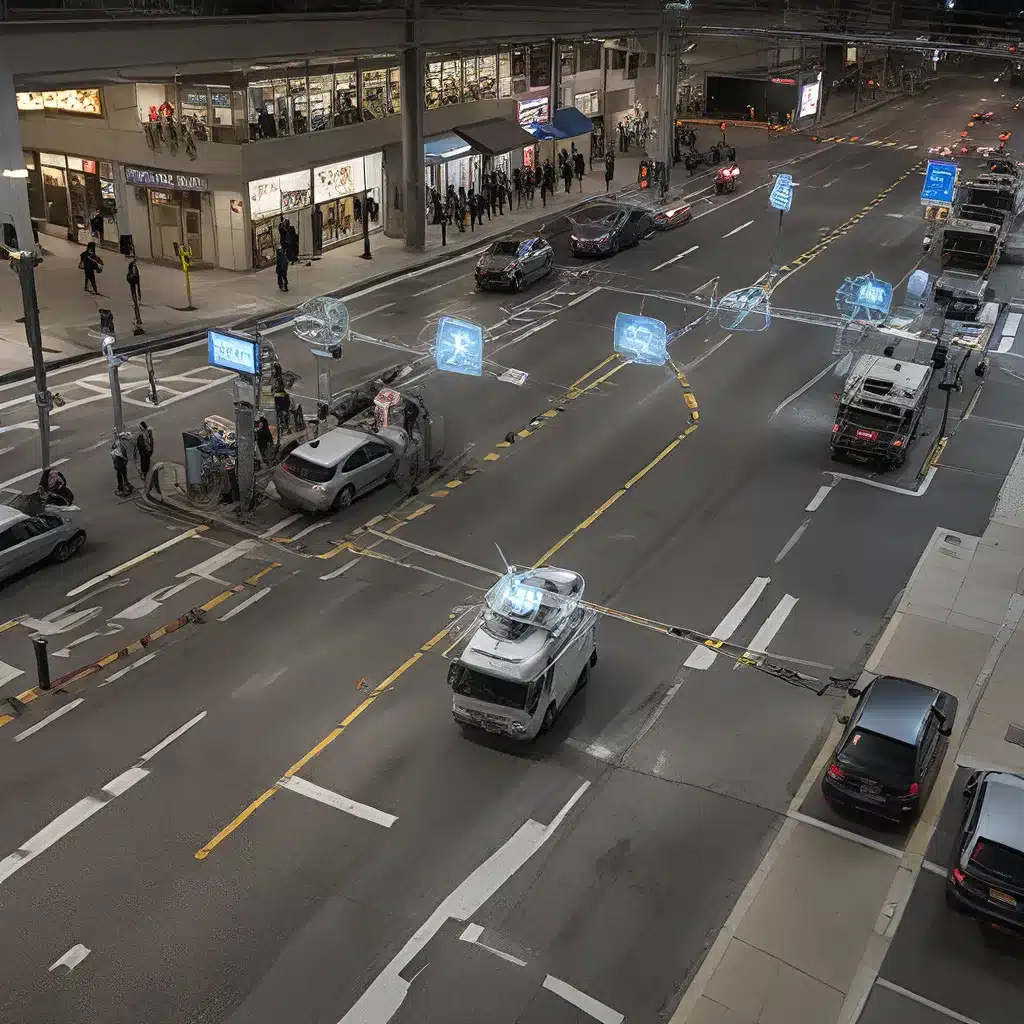
The Evolving Role of Sensor Networks in a Connected World
As the digital landscape continues to expand, sensor networks have emerged as the backbone of the Internet of Things (IoT). These intricate webs of interconnected devices, equipped with various sensing capabilities, are transforming the way we perceive and interact with our environment. From industrial automation to smart city initiatives, the applications of sensor networks are vast and far-reaching.
At the heart of this technological revolution lies the concept of sensor fusion. By integrating data from multiple sensor sources, sensor fusion algorithms can provide a more comprehensive and accurate understanding of a given situation, a phenomenon known as enhanced situational awareness. This approach not only enhances decision-making but also unlocks new possibilities for optimizing processes, improving safety, and driving innovation across a wide range of industries.
Designing Robust and Responsive Sensor Networks
Crafting effective sensor networks requires a deep understanding of network architecture, communication protocols, and data processing techniques. One of the key design considerations is the choice of network topology, which can range from centralized to distributed configurations, each with its own advantages and trade-offs.
Centralized sensor networks rely on a single, powerful hub to manage data collection, processing, and decision-making. This approach can offer tight control and efficient resource utilization but may be vulnerable to single points of failure. In contrast, distributed sensor networks employ a more decentralized model, where sensors communicate directly with each other or through multiple hubs, improving resilience and scalability.
Another crucial aspect of sensor network design is the selection of appropriate communication protocols. Depending on the application requirements, protocols such as ZigBee, LoRaWAN, or Bluetooth Low Energy (BLE) may be deployed to facilitate reliable and energy-efficient data transmission. The integration of these protocols with cloud computing and edge processing capabilities further enhances the capabilities of sensor networks, enabling real-time decision-making and seamless data integration.
Unlocking the Potential of Sensor Fusion
The true power of sensor networks lies in their ability to fuse data from diverse sources, creating a comprehensive understanding of the monitored environment. This process involves the application of advanced algorithms and machine learning techniques to extract meaningful insights from the raw sensor data.
One such technique, data fusion, combines information from multiple sensors to produce a more accurate and reliable representation of the environment. This approach can be particularly valuable in complex scenarios, where individual sensors may have limited capabilities or be susceptible to interference or noise.
Another prominent sensor fusion technique is feature-level fusion, which involves extracting and combining specific characteristics or attributes from multiple sensors. This method can enhance object detection, classification, and tracking, making it a crucial component in applications such as autonomous vehicles, surveillance systems, and industrial automation.
Addressing the Challenges of Sensor Network Security and Energy Management
As sensor networks become increasingly ubiquitous, the need for robust security measures and efficient energy management strategies becomes paramount. Cyber threats, such as data breaches, denial-of-service attacks, and malware infiltration, pose significant risks to sensor network systems, potentially compromising sensitive data and disrupting critical operations.
To mitigate these risks, sensor network designers must adopt a multi-layered security approach, incorporating techniques like encryption, authentication, and access control. The integration of blockchain technology and edge computing can further enhance the security of sensor networks by distributing data storage and processing, reducing the attack surface and improving data integrity.
Alongside security concerns, the energy consumption of sensor networks is a crucial consideration, especially in applications where sensor nodes are deployed in remote or hard-to-reach locations. Advancements in energy-harvesting technologies, low-power electronics, and duty-cycling algorithms have enabled the development of energy-efficient sensor network designs, ensuring prolonged operational lifetimes and reducing maintenance requirements.
The Future of Sensor Networks: Towards Smarter and More Resilient Systems
As the Internet of Things continues to evolve, sensor networks will play an increasingly pivotal role in shaping the future of various industries and societal domains. The integration of 5G technology, artificial intelligence, and edge computing will further enhance the capabilities of sensor networks, enabling real-time data processing, autonomous decision-making, and predictive analytics.
Sensor-Networks.org is at the forefront of this technological revolution, providing a comprehensive resource for professionals, researchers, and enthusiasts interested in the latest advancements in sensor network design, IoT applications, and related technologies. By exploring the principles of distributed sensor fusion and addressing critical challenges, this platform aims to empower individuals and organizations to harness the full potential of sensor networks in their respective fields.
As we delve deeper into the realm of connected devices and intelligent systems, the role of sensor networks in enhancing situational awareness and driving innovation will only continue to grow. By staying informed and embracing these transformative technologies, we can unlock new possibilities and create a more responsive, resilient, and interconnected world.
Conclusion: Embracing the Future of Sensor Networks
Sensor networks have evolved into a transformative force, reshaping industries and redefining our understanding of the world around us. Distributed sensor fusion lies at the heart of this revolution, empowering us to make more informed decisions, optimize processes, and unlock new opportunities for innovation.
As we continue to navigate the ever-evolving landscape of IoT and connected technologies, the design principles, security considerations, and energy management strategies discussed in this article will be crucial in guiding the development of robust and responsive sensor network systems.
By embracing the potential of sensor networks and staying informed about the latest advancements, individuals and organizations can position themselves at the forefront of this technological revolution, driving progress and unlocking new possibilities in their respective domains.